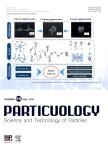Application of dynamic image analysis to the optical characterisation of fibrous bulk material
作者机构:Institute of Particle TechnologyUniversity of WuppertalGermany
出 版 物:《Particuology》 (颗粒学报(英文版))
年 卷 期:2024年第90卷第7期
页 面:51-60页
核心收录:
学科分类:0817[工学-化学工程与技术] 08[工学] 0805[工学-材料科学与工程(可授工学、理学学位)] 0812[工学-计算机科学与技术(可授工学、理学学位)]
基 金:Schwarzwälder Textil-Werke Heinrich Kautzmann GmbH
主 题:Bootstrap method Dynamic image analysis Fibre diameter Fibre length distribution Natural fibres Synthetic fibres
摘 要:Dynamic image analysis provides an automated evaluation method to determine the size and shape of multiple particles. This method represents a common application for ordinary bulk material. The latest draft of ISO 13322–2:2021 describes the state of the art, but lacks instructions for handling fibrous bulk material. Interlocking fibres complicate the measurement conditions and require a disentanglement of fibrous samples during a pre-dispersion step. A further error source includes the fibre orientation inside the measurement zone of the device. If the thresholding algorithm fails to differentiate between the fibre projection area and the background, a subsequent image optimisation solves the problem. This article addresses the mentioned problems by analysing cotton cellulose and polyacrylonitrile fibres. Besides the execution of a pre-dispersion step, the experiments compare the discrepancies between dry and wet dispersion. Here, the software packages PAQXOS and ImageJ perform the image evaluation. In this case, the wet dispersion setup with a subsequent image evaluation by ImageJ provides comprehensible results.



